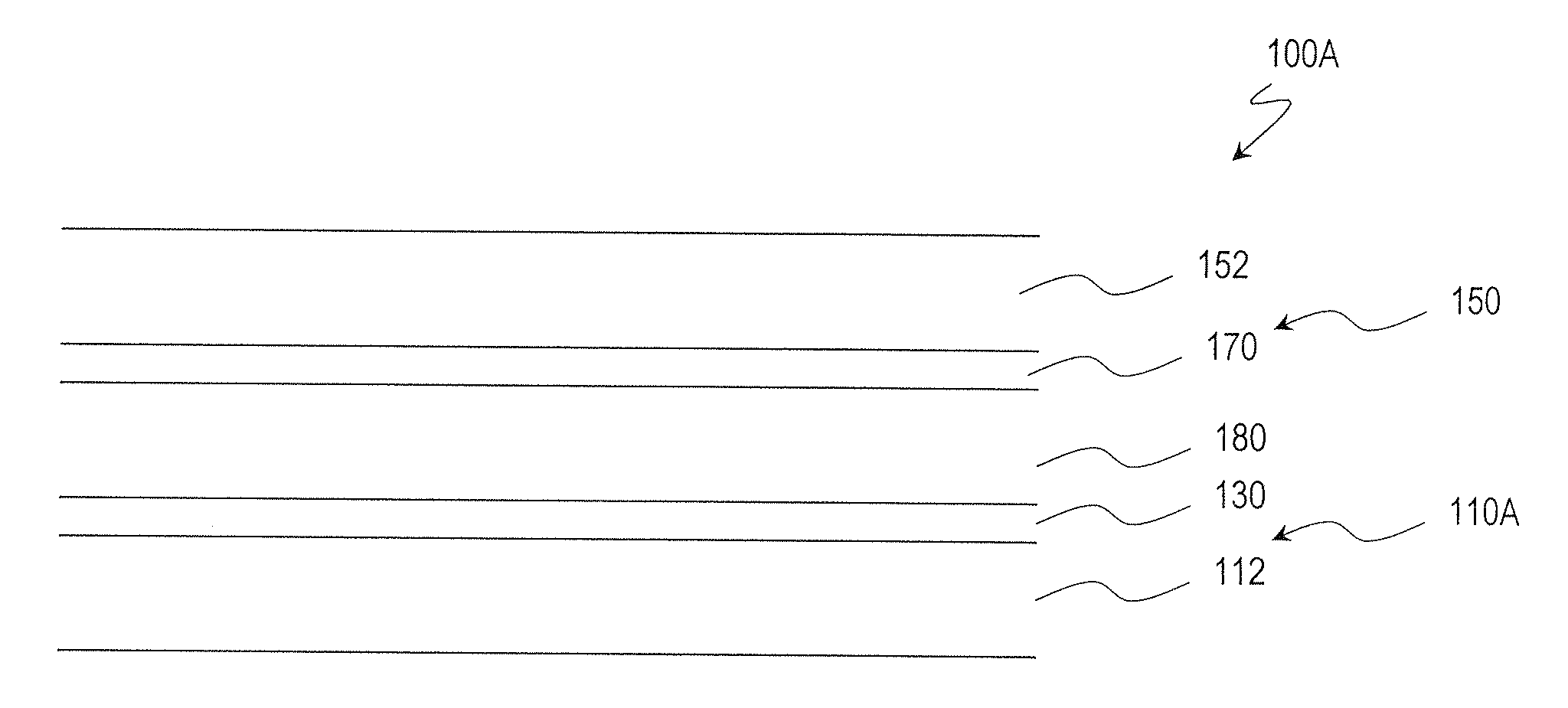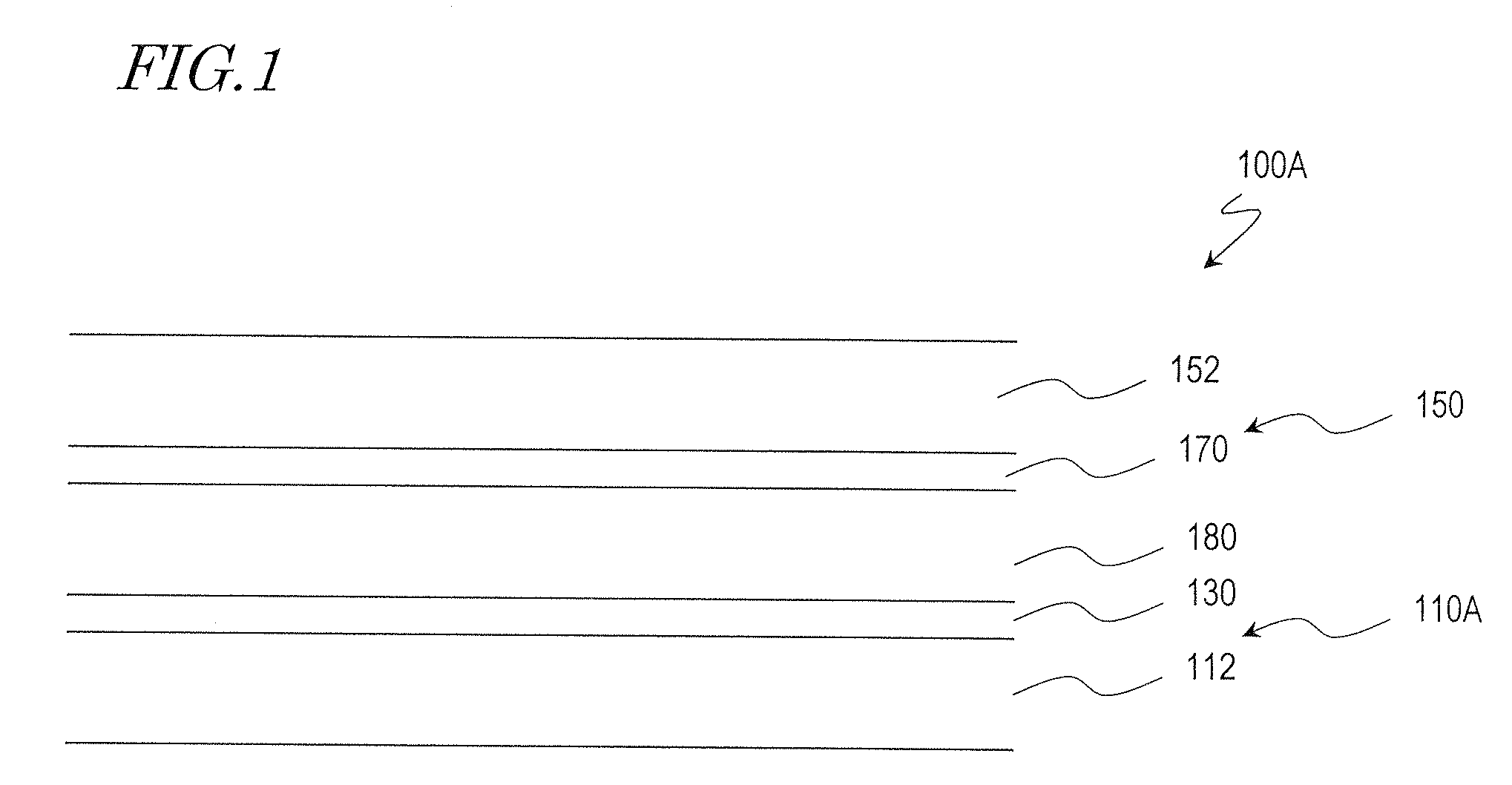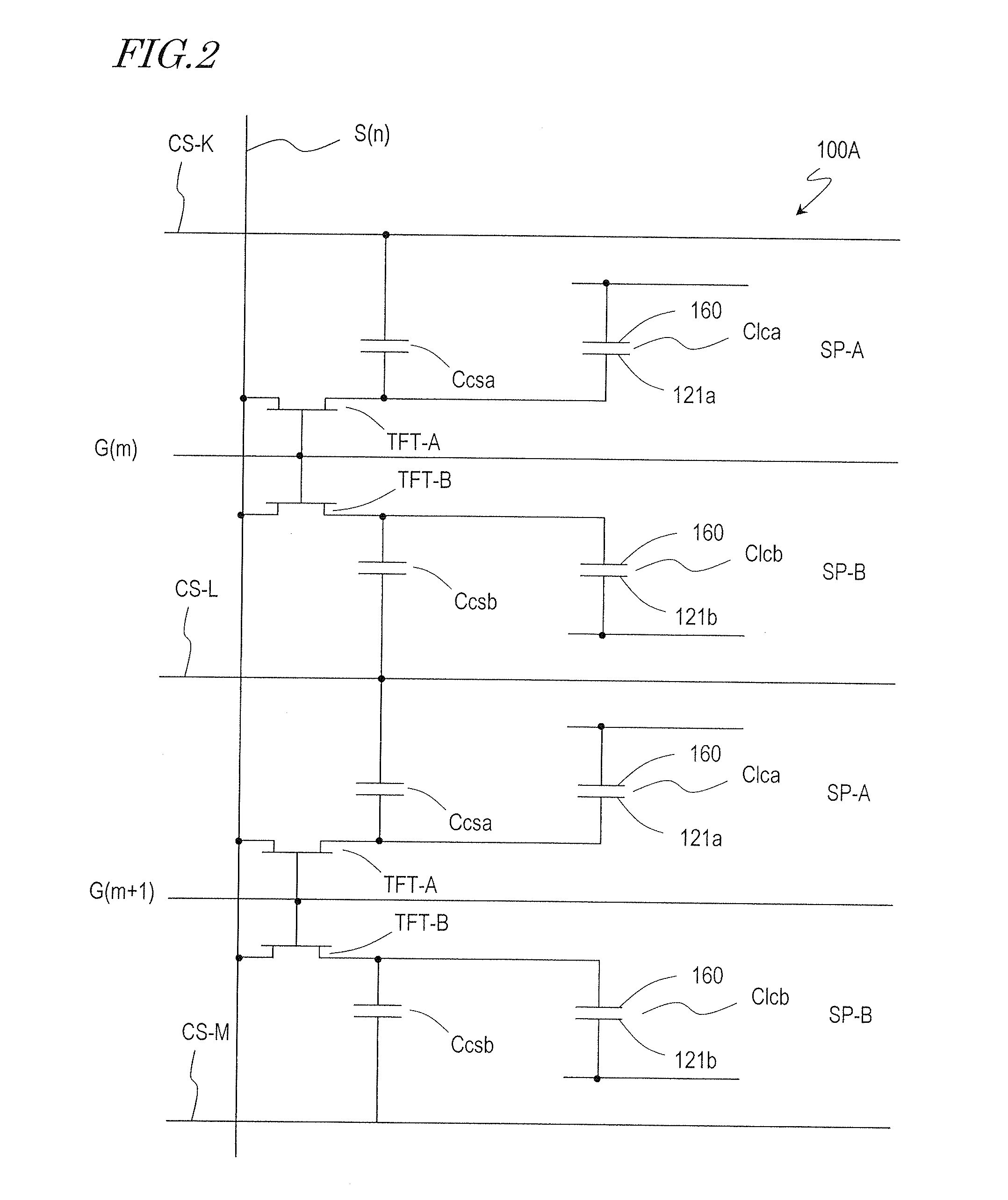Liquid crystal display device
a liquid crystal display and display device technology, applied in non-linear optics, instruments, optics, etc., can solve the problems of reducing yield, difficult to achieve a high luminance, and sometimes disconnected lines to supply signals, so as to minimize the decrease in optical transmittance and repair defects more easily
- Summary
- Abstract
- Description
- Claims
- Application Information
AI Technical Summary
Benefits of technology
Problems solved by technology
Method used
Image
Examples
embodiment 1
[0087]Hereinafter, a First Embodiment of a Liquid Crystal display device according to the present invention will be described.
[0088]FIG. 1 is a schematic representation illustrating a liquid crystal display device 100A in this embodiment. The liquid crystal display device 100A includes an active-matrix substrate 110A, a counter substrate 150 and a liquid crystal layer 180. The active-matrix substrate 110A includes a first alignment film 130 that is supported on an insulating substrate 112. On the other hand, the counter substrate 150 includes a second alignment film 170 supported on a transparent insulating substrate 152. A liquid crystal layer 180 is arranged between the first and second alignment films 130 and 170 of the active-matrix substrate 110A and the counter substrate 150. Although not shown in FIG. 1, multiple lines and pixel electrodes are arranged between the insulating substrate 112 of the active-matrix substrate 110A and the first alignment film 130. And a counter elec...
embodiment 2
[0171]Hereinafter, a second embodiment of a liquid crystal display device according to the present invention will be described.
[0172]FIG. 13(a) is a schematic plan view illustrating the configuration of an active-matrix substrate 110B for the liquid crystal display device 100B of the second embodiment. FIG. 13(b) is a schematic plan view illustrating how dark lines are produced in the liquid crystal display device 100B of this embodiment. And FIG. 13(c) is a schematic plan view illustrating the liquid crystal display device 100B.
[0173]The liquid crystal display device 100B of this embodiment has substantially the same structure as the liquid crystal display device 100A described above, and the overlapping description thereof will be omitted herein. The liquid crystal display device 100B is different from this liquid crystal display device 100A in that the dark lines are produced in an inverted swastika shape.
[0174]In FIG. 13(a), illustrated are the second subpixel SP-B of a pixel on...
embodiment 3
[0206]Hereinafter, a third embodiment of a liquid crystal display device according to the present invention will be described.
[0207]FIG. 22(a) is a schematic plan view illustrating the configuration of the active-matrix substrate 110C of a liquid crystal display device 100C as a third embodiment of the present invention. FIG. 22(b) is a schematic plan view illustrating how dark lines are produced in the liquid crystal display device 100C of this embodiment. And FIGS. 22(c) and 22(d) are schematic plan views of the liquid crystal display device 100C. Specifically, FIG. 22(c) indicates where dark lines are produced and where ribs or slits (openings) are arranged in the liquid crystal display device 100C, while FIG. 22(d) illustrates the pattern of the black matrix BM.
[0208]The liquid crystal display device 100C of this embodiment has a similar structure to the liquid crystal display devices 100A and 100B described above, and the overlapping description thereof will be omitted herein. ...
PUM
| Property | Measurement | Unit |
|---|---|---|
| angle | aaaaa | aaaaa |
| pretilt angle | aaaaa | aaaaa |
| pretilt angle | aaaaa | aaaaa |
Abstract
Description
Claims
Application Information
 Login to View More
Login to View More - R&D
- Intellectual Property
- Life Sciences
- Materials
- Tech Scout
- Unparalleled Data Quality
- Higher Quality Content
- 60% Fewer Hallucinations
Browse by: Latest US Patents, China's latest patents, Technical Efficacy Thesaurus, Application Domain, Technology Topic, Popular Technical Reports.
© 2025 PatSnap. All rights reserved.Legal|Privacy policy|Modern Slavery Act Transparency Statement|Sitemap|About US| Contact US: help@patsnap.com



